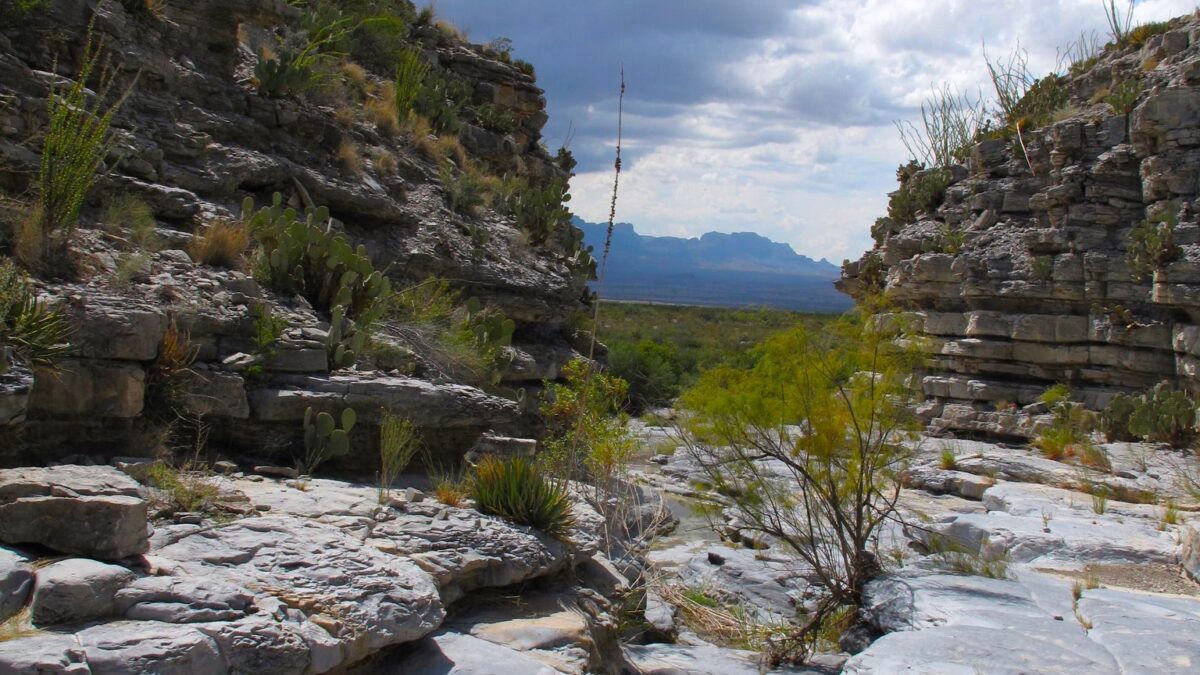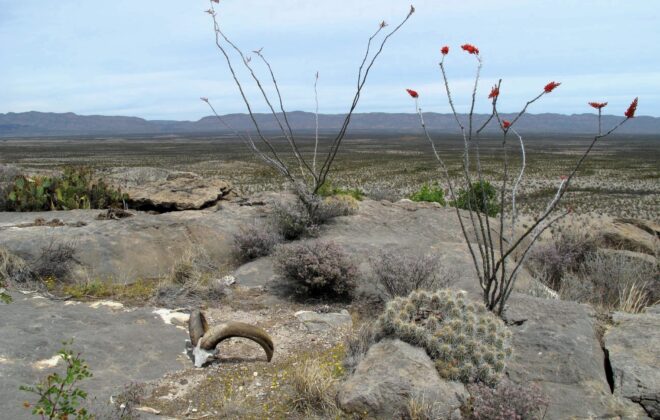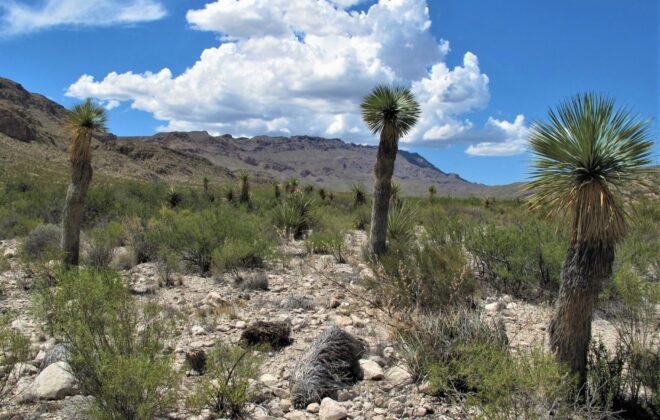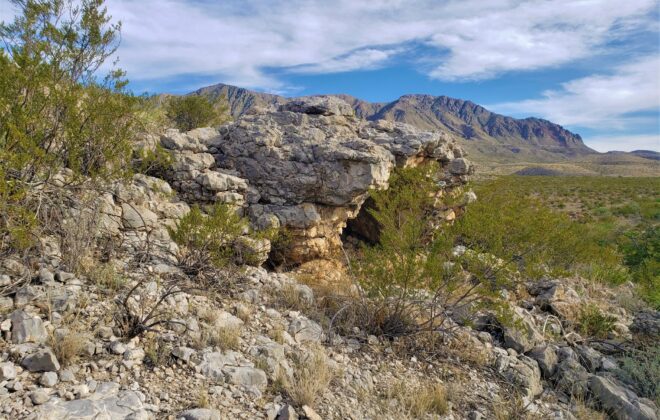Finding Serenity at Muskhog Spring
SOMEWHERE IN THE LOWER BIG BEND…
Muskhog Spring is a spot most know nothing about, even those who have been to the park many times. This is likely due to several reasons, including the location of the spring itself.
Tucked in the confines of the northeastern reaches of the Tornillo Basin, its singular notation from afar is a reddish orange ridge flaring up amid the beigish, nearly bare earth tones of Boquillas flagstone. When the eye sweeps across the basin, this ridge is one of the few natural formations giving cause for a closer look.
But that second look probably only occurs once for every ten thousand pairs of wandering eyes.
Coming in from the west or the south, this is the landmark you look for. But do not be hasty while sojourning along, as this terrain has history from eons ago still untold. The Tornillo Basin and the Tres Negritas region of the park is a wealth of fossilized knowledge, and many a scientific find from time immemorial has occurred here.
Beyond stumbling across such a possible discovery is the odd beauty of the landscape itself. The greenish hues of yucca, mesquite and clumps of wild grasses collide with dark hued piles of volcanic rock, which in turn stand out against sunbaked soil and sand overlooked by a crystal blue sky.
Once near the small canyon for the spring, the world around changes again dramatically. With a near solid floor of blueish sheets of stone running for hundreds of yards, this canyon and attending feeds and pour offs is one of at least a half dozen coming together in the immediate area.
Each has its own tales to tell, and each combine to form a fascinating mosaic gathered together by Javelina Wash, which begins in the uppermost slopes of the Deadhorse Mountains. The main run for this wash runs through the canyon where Muskhog Spring is situated.
This is a very old place when it comes to human habitation, witnessed by the dozens of mortars and metates burrowed into that blue rock floor. Many are quite large compared to those found in other locations, both in width and depth. So ancient many have a trailing lip imprinted on the downstream side, formed by centuries of rushing water from flash floods.
Off to one side is a cave angled into the canyon wall, an oddity in itself as the shelter possesses a natural chimney. This anomaly has been put to use by mankind of all cultures and purposes, and the ceiling blackened by the smoke of at least a thousand campfires.
Beyond the canyon mouth are other signs of more recent human activity. There is a still robust rock corral, fashioned from the surrounding Boquillas flagstone. The walls stand strong against the encroaching desert, though the wire gap has fallen and rusts away serenely. Same for what is left of a nearby dwelling, along with metal water pipes disfigured by time and rushing water.
Perhaps that one word above is the best descriptor of all: Serene. Man has come, man has challenged, man has lived here and now man has gone away.
But the desert remains, serene and at rest.
God bless to all,
Ben
Ben H. English
Alpine, Texas
USMC: 1976-1983
THP: 1986-2008
HS Teacher: 2008-2010
Author 2017-Present
Facebook: Ben H. English
Webpage: benhenglish.com
‘Graying but still game’



